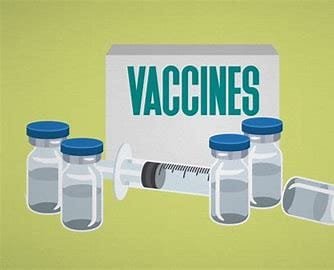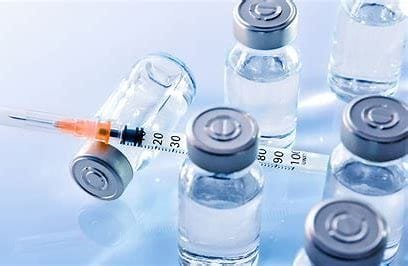Vaccines are revolutionizing public health as they serve immunity against a broad range of infectious diseases. From smallpox to COVID-19, vaccines have played a crucial role in preventing and eliminating most life-threatening diseases. Understanding how vaccines are designed, and their applications can help uncover their significance and science.

Design of Vaccines
The formation of the vaccine undergoes stages, such as from research to production, so that this product is assuredly safe and effective.
Vaccines can be categorized based on how they are produced into these categories:
Live Attenuated Vaccines:
These vaccines use a weakened form of the virus or bacteria. The pathogen is weakened in a lab so that it will not cause disease among healthy people but will still provoke the immune system. The other examples are the MMR vaccines (measles, mumps, and rubella) and chickenpox. They often confer life-long immunity after one or two doses but are contraindicated in immunocompromised patients where the risk of adverse reactions poses a threat even from a weakened form of the virus.
Killed or Inactivated Vaccines:
These vaccines rely on a killed form of the pathogen. The pathogen is inactivated using heat, chemicals, and radiation, which ensures that it cannot replicate within the body, but it still elicits immunity in the body. Examples include hepatitis A, influenza, and rabies vaccines. Multiple doses of inactivated vaccines may be necessary for obtaining and maintaining immunity.
Subunit, recombinant, polysaccharide, and conjugate vaccines: These vaccines employ parts of the pathogen in the form of proteins or sugars to induce an immune response. Since they have only components of the pathogen, such vaccines tend to cause fewer side effects than live or inactivated vaccines are likely to. Among them are the human papillomavirus and the meningococcal vaccine. Adjuvants, chemicals that enhance the immune response, can sometimes be added to subunit vaccines to make them more potent.
Messenger RNA Vaccines:
It is the newest approach, using synthetic genetic material that instructs the cells in the body to produce a protein from the virus. The harmless protein found here causes the immune system to react and build immunity. Examples of this innovative vaccine technology include the Pfizer-BioNTech and Moderna COVID-19 vaccines. The benefit of mRNA vaccines is that they can be developed rapidly and do not use any live pathogen, minimizing the threat of infection.
Viral vector vaccines.
For this type, a genetically modified virus, referred to as a viral vector, is used to deliver instructions to body cells. The cells will then produce an antigen that incites an immune response. Examples of this type are the AstraZeneca-Oxford and the Johnson & Johnson COVID-19 vaccines. These vaccines offer an excellent immunity reaction and can be stored better because they do not require very low temperature storage, which most mRNA vaccines need.
They prepare the immune system in case it later needs to destroy infection. When a vaccine introduces the weakened version of the pathogen to a body, the immune system identifies it as foreign and then starts the production of antibodies. These are proteins able to neutralize or destroy pathogens. Besides, the immune system develops memory cells that “remember” the pathogen. If the vaccinated person is exposed in later life to the natural disease, the memory cells rapidly produce antibodies to fight infection and, thus, illness is prevented or its severity minimized.

The immune response generated by vaccines generally reproduces, but less vigorously, what might occur during a natural infection. That is why vaccines are often described as a safer way of inducing immunity.
Clinical uses of vaccines
Vaccines serve many purposes for public health. Some of the more notable uses of vaccines include the following:
Disease Prevention:
The very objective of vaccination is to prevent infectious disease from occurring as a consequence of inducing immunity in individuals and populations. For example, the polio vaccine has been instrumental in effectively eradicating polio throughout most of the world. Immunizations also play a role in the eradication of smallpox globally, where it has saved millions of people.
Herd Immunity When most of a population is immunized, the disease spread slows or even stops because now fewer people are left for it to spread to. This is called herd immunity, and it’s just one of the ways it protects the undefended-presenting members of society, such as newborns or people whose immune systems are decaying. Mass immunization campaigns have successfully controlled outbreaks of measles, mumps, and rubella through this phenomenon of herd immunity.
Control of Epidemics and Pandemics:
Vaccines can control the spread of diseases during epidemics and pandemics and help reduce their impact. For instance, the speed at which COVID-19 vaccines have been developed and rolled out has been critical in controlling the pandemic. Such vaccines not only lowered the severity of the illnesses that have been present but also translated into lower transmission rates across most parts of the globe.
Protection against at-risk populations:
There are populations with increased susceptibility to serious consequences of influenza infection. These include older adults, neonates, and individuals with chronic diseases. Vaccines would protect the at-risk groups from the infections or minimize their consequences if infection occurs. The flu vaccine is an annual routine vaccine, especially for the elderly age of 65 years and above. These individuals, if infected, would easily develop secondary complications such as pneumonia.
Prevention of Cancer:
Several vaccines are also known to prevent cancers that arise from infections. The HPV vaccine prevents an infection with the human papillomavirus from causing cervical, throat, and other cancers. A hepatitis B vaccine can reduce cancer risk for liver cancer, which is highly associated with chronic hepatitis B infection.
Global Health Initiatives:
Vaccination programs are part of the global health strategies and reach down to low- and middle-income countries. WHO and Gavi, the Vaccine Alliance, work to ensure that vaccines come to people’s lives across the globe. These initiatives seek to prevent outbreaks of diseases like diphtheria, tetanus, and rotavirus—a group of infections whereby children are the most affected in resource-limited settings.
Conclusion
Vaccines remain one of the most effective tools used in protecting public health. Vaccines stimulate the immune system to identify and fight infections without leading to any illness by introducing harmless antigens to the body in this process. Vaccination plays a very important role in the control of infectious diseases and improvement of global health through disease prevention, protection of herd immunity, and protection of vulnerable populations. Ever-continuing research and development of new vaccines assure future generations safe conditions from emerging, again re-emerging health threats.




